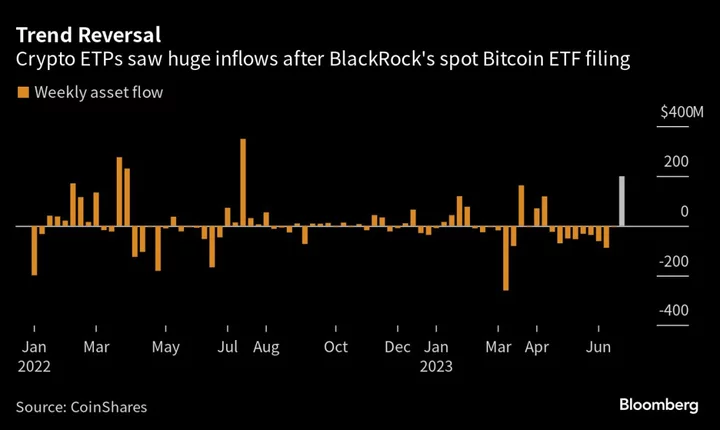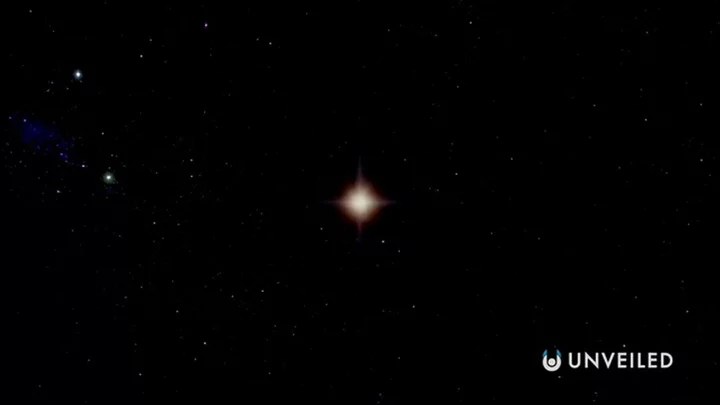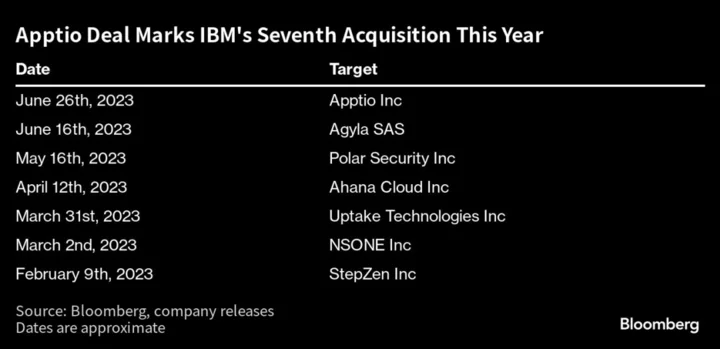
Human babies can be born with 'tails' – and it's not a cute quirk of evolution
How would you feel if you gave birth to a beautiful newborn, only to clock they have a tail? It sounds outlandish, but it can happen in very rare cases when humans can be born with these boneless rear-end appendages, which are sometimes up to 18 centimetres long. To date, official records have tallied about 40 babies born with these 'tails' which are easily removed through surgery. So how does it happen? Experts used to think the tails were evolutionary accidents, leftovers from our primate ancestors. Sign up to our free Indy100 weekly newsletter But thanks to research, experts have realised they probably come from an incomplete fusion of the spinal column, or what's known as a spinal dysraphism. Human babies that are born with tails tend to have serious associated neurological defects. In 2008, a paper argued that "true vestigial tails are not benign" because they may be associated with underlying dysraphism. Roughly half of the cases reviewed were associated with either meningocele or spina bifida occulta. So it is not just a harmless evolutionary quirk after all, but more research needs to be done, scientists say. Have your say in our news democracy. Click the upvote icon at the top of the page to help raise this article through the indy100 rankings.
2023-06-27 00:20

5 Best Agents to Pair with Deadlock in Valorant
Check out the best five Valorant Agents to pair with Deadlock in Episode 7 Act I to gain intel, trap, and kill opponents.
2023-06-27 00:19

China’s Electric Vehicle Bubble Is Starting to Deflate
The world’s largest electric vehicle market is putting its crowded infancy stage behind it. The explosive industry in
2023-06-27 00:18

Here's how much each state will get in the $42.5 billion broadband infrastructure plan
The Biden administration on Monday outlined how states across the country will be receiving billions of dollars in federal funding for high-speed internet access, highlighting the US government's push to bring connectivity to more Americans and to close the digital divide.
2023-06-27 00:16

Amazon is investing another $7.8B in Ohio-based cloud computing operations, state leaders say
Amazon’s profitable cloud business will invest roughly $7.8 billion by the end of 2029 to expand its data center operations in central Ohio
2023-06-27 00:15

Wagner leader Prigozhin breaks silence over mutiny: ‘We didn’t want to overthrow government’
Wagner mercenary leader Yevgeny Prigozhin has issued his first public statement since the aborted march on Moscow, claiming he had never intended to overthrow Putin’s government. In his first public comments since Saturday’s dramatic events, he said the one-day mutiny was intended to be a protest at the ineffectual conduct of the war in Ukraine. Prigozhin spoke in an 11-minute audio message released on the Telegram messaging app. He denied trying to overturn the Russian state and said he acted in response to an attack on his force that killed some 30 of his fighters. “We started our march because of an injustice,” Prigozhin said in a recording that gave details about where he is or what his future plans are. A festering feud between Prigozhin and Russia’s military brass erupted on Saturday into a mutiny that saw the mercenaries leave Ukraine to seize a military headquarters in a southern Russian city and roll seemingly unopposed for hundreds of miles toward Moscow, before turning around after less than 24 hours. The Kremlin said it had made a deal for Prigozhin to move to Belarus and receive amnesty, along with his soldiers. There was no confirmation of his whereabouts Monday, although he was reportedly seen at a hotel in the Belarusian capital, Minsk. Russian media reported a criminal probe against Prigozhin continued, and some lawmakers called for his head. In a return to at least superficial normality, Moscow’s mayor announced an end to the “counterterrorism regime” imposed on the capital, when troops and armored vehicles set up checkpoints on the outskirts and authorities tore up roads leading into the city. Meanwhile, Moscow showed a video of defence minister Sergei Shoigu at a military headquarters in Ukraine. It was unclear when it was flmed.Prigozhin’s rift with the military dates back years, to Russia’s intervention in Syria, where Wagner forces also were active. Though the Prigozhin mutiny was brief, it was not bloodless. Several military helicopters and a military communications plane were shot down by Wagner forces, killing at least 15. Prigozhin denied there were any casualties on his side, but media reports indicated the airstrikes hit some Wagner vehicles, and messaging app channels featured images of the damage. Reuters and Associated Press contributed to this report Read More The Body in the Woods | An Independent TV Original Documentary The harrowing discovery at centre of The Independent’s new documentary Who is Yevgeny Prigozhin? Wagner rebellion presents unique opportunity for Ukraine, experts say Kremlin denies Putin has fled Moscow as Russia president’s plane ‘disappears’
2023-06-27 00:15

Former Apprentice star bares all in ‘world’s largest AI-generated billboard'
A man known for flying 4,000 miles to track down a thief who stole his AirPods is at it again – and this time, he’s baring all. With artificial intelligence technology on the rise, former Apprentice contestant, Lewis Ellis, is on a mission to find out if robots are going to come for our jobs. In a bizarre experiment, the 32-year-old, who is no stranger to unusual projects – having previously auctioned off his bum cheek for the highest bidder to choose a tattoo – he used ChatGPT to re-create an image for a billboard. And the result is hilarious. The giant billboard, featured at Victoria Warehouse in Lewis' hometown of Manchester, shows the entrepreneur stark naked – as a mermaid. Sign up to our free Indy100 weekly newsletter He used the famous Burt Reynolds Cosmo centre-fold for the main image and asked ChatGPT to “create the content”. ”Whatever it creates, that goes live,” Lewis says in a YouTube video. “I’m not sure if it’s is a good idea, I’m not sure if it’s going to be a complete waste of time but I guess we’ll find out.” Measuring in at 17.6m x 17.4 billboard, it is believed to be the second largest in Europe – however Lewis believes it is the “world’s largest AI-generated billboard. The Apprentice star photoshops his face and tattoos onto the nude Reynolds. The billboard went live at 9am on Wednesday (21 June) and… it’s definitely interesting. Lewis said: ”I was silly to assume that AI would pull it together for me – I won’t really have to do much. ”Turns out it's way harder than I thought. ”And it looks so bad.” The sorry-looking AI generated advert morphed the image of Lewis and Burt Reynolds into the sea creature. In the background, there is a cartoon drawing of a lighthouse and beach. The sign reads: “Feast your eyes on this tragic masterpiece. ”The world’s largest AI-generated billboard. ”AI is going to take over the world. ”That may be true… but it’s not going to be today.” The billboard ad is a recreation of his company, Hussel Marketing’s previous marketing campaign. Lewis took his inspiration for the experiment from the likes of McDonald's, Burger King and Subway, with the brands using ChatGPT for recent ads. To make it even harder, he gave himself just 24 hours to complete the challenge. The entrepreneur certainly isn’t shy in pushing the boundaries of what is possible and using technology to do so. In the past, he has shelled out £2,300 on flights, accommodation and food to fly 4,000 miles to track down his headphones, saying his mum describes him as “mental”. He told Jam Press: “We had no real plan but just hoped to find them again. “The fact you can track tiny headphones around the world is unbelievable. “I didn’t really expect to get them back and I joked that flying to Doha to get them is the pettiest thing I’ve ever done. “But it’s just great that we managed to find them – and now I don’t need to buy a new pair!” What does the marketing guru have up his sleeve next? It’s anyone’s guess. But one thing is certain – AI bots aren’t going to take over his job just yet. Have your say in our news democracy. Click the upvote icon at the top of the page to help raise this article through the indy100 rankings.
2023-06-26 23:29

Canada Wildfire Smoke Crossed the Atlantic to Cover Parts of Europe
Smoke from wildfires in Canada has traveled over 2,000 miles across the Atlantic Ocean to cover the skies
2023-06-26 23:25

Digital Asset Inflows Highest in a Year After BlackRock’s Spot-Bitcoin ETF Filing
Digital-asset investment products added $199 million last week, the biggest weekly inflows in nearly a year, as a
2023-06-26 23:20

Scientists have solved a great mystery at the dawn of time itself
Many of us will never get our heads around the fact that scientists can actually look back in time. The power of telescopes enables us to study phenomena that occurred billions of years ago, and even gaze upon the dawn of creation itself. Now, astrophysicists have solved a great mystery at the heart of our universe's birth, when everything was shrouded in a dense fog. In four separate papers published in (or accepted into) The Astrophysical Journal, scientists at MIT, Japan’s Nagoya University, ETH Zurich and the University of Groningen in the Netherlands have shared some stunning insights into the period known as the Epoch of Reionisation. Sign up for our free Indy100 weekly newsletter Relatively little is known about this era, during which the thick fog engulfing the universe gradually cleared, allowing stars and galaxies to shine. However, fresh observations made using the James Webb Space Telescope (JWST) are beginning to pull back the curtain on it all. Now, scientists have finally figured out why one billion years after the Big Bang, that dense fog finally dispersed. First things first, what exactly is the Epoch of Reionisation? During the first billion years after the Big Bang, space was filled with a soupy mist of ionised gas which was impenetrable to light. As the gas began to cool, protons and electrons began to combine to form mostly neutral hydrogen atoms and some helium. These clumps of neutral hydrogen are then believed to have started forming stars, grouped into galaxies. This process reionised the gas but, because space had expanded by this point, the newly ionised hydrogen was diffuse enough to allow light to stream through, as Science Alert notes. A few million years later, the universe had become the transparent expanse with which we’re now familiar. To explain, here’s a look at what those four new papers reveal about why space became so much clearer. Paper 1 In the first study, researchers at the University of Groningen revealed that they had discovered crucial evidence of star formation during the Epoch of Reionisation. They found a specific wavelength of hydrogen, called hydrogen alpha, which is formed when a star is born and blasts out huge amounts of ionising ultraviolet radiation. Until now, no one was sure what produced all the ultraviolet light that emerged during the Epoch of Reionisation. But, thanks to their detection of hydrogen alpha, the Groningen team of astronomers that star formation had a “significant role in the process of reionisation”. Paper 2 Another paper, spearheaded by Japanese astrophysicist Daichi Kashino, added galaxies into the mix. According to Kashino and his international team, reionisation happened in “bubbles” around the plethora of newly-formed galaxies. They used JWST data to pinpoint these pockets and measure them precisely, identifying that they had a 2 million light-year radius around the tiny galaxies. Over the next hundred million years, the bubbles grew larger and larger, eventually merging and causing the entire universe to become transparent, according to an article published by NASA. Paper 3 A third group of researchers, led by ETH Zurich astrophysicist Jorryt Matthee, analysed the characteristics of these bubbles and found that the early galaxies they contained were hot, low in metals and dust and very active. He said they were “more chaotic” than those in the nearby universe, adding: "Webb shows they were actively forming stars and must have been shooting off many supernovae. They had quite an adventurous youth!” Paper 4 A fourth paper, led by MIT cosmologist Anna-Christina Eilers, focused its attention on the quasar galaxy at the centre of the JWST observations. This quasar is, according to NASA, an “extremely luminous active supermassive black hole that acts like an enormous flashlight”. Eilers and her team used data from the telescope to confirm that the black hole is the most massive currently known in the early universe, weighing 10 billion times the mass of the Sun. “We still can’t explain how quasars were able to grow so large so early in the history of the universe,” she said. “That’s another puzzle to solve!” Conclusion Well done if you’ve survived to the end – this is all pretty heavy-going. But the key point here is that before the JWST no one knew for sure what caused reionisation. Now, thanks to the mighty golden-eyed telescope, one of the great mysteries behind the birth of creation has finally been solved. Have your say in our news democracy. Click the upvote icon at the top of the page to help raise this article through the indy100 rankings.
2023-06-26 22:53

EU Looks Into Blocking Out the Sun as Climate Efforts Falter
The European Union will join an international effort to assess whether large-scale interventions such as deflecting the sun’s
2023-06-26 22:50

IBM Will Buy Software Company Apptio for $4.6 Billion
International Business Machines Corp. will buy software company Apptio for $4.6 billion, marking the seventh acquisition this year
2023-06-26 22:49
